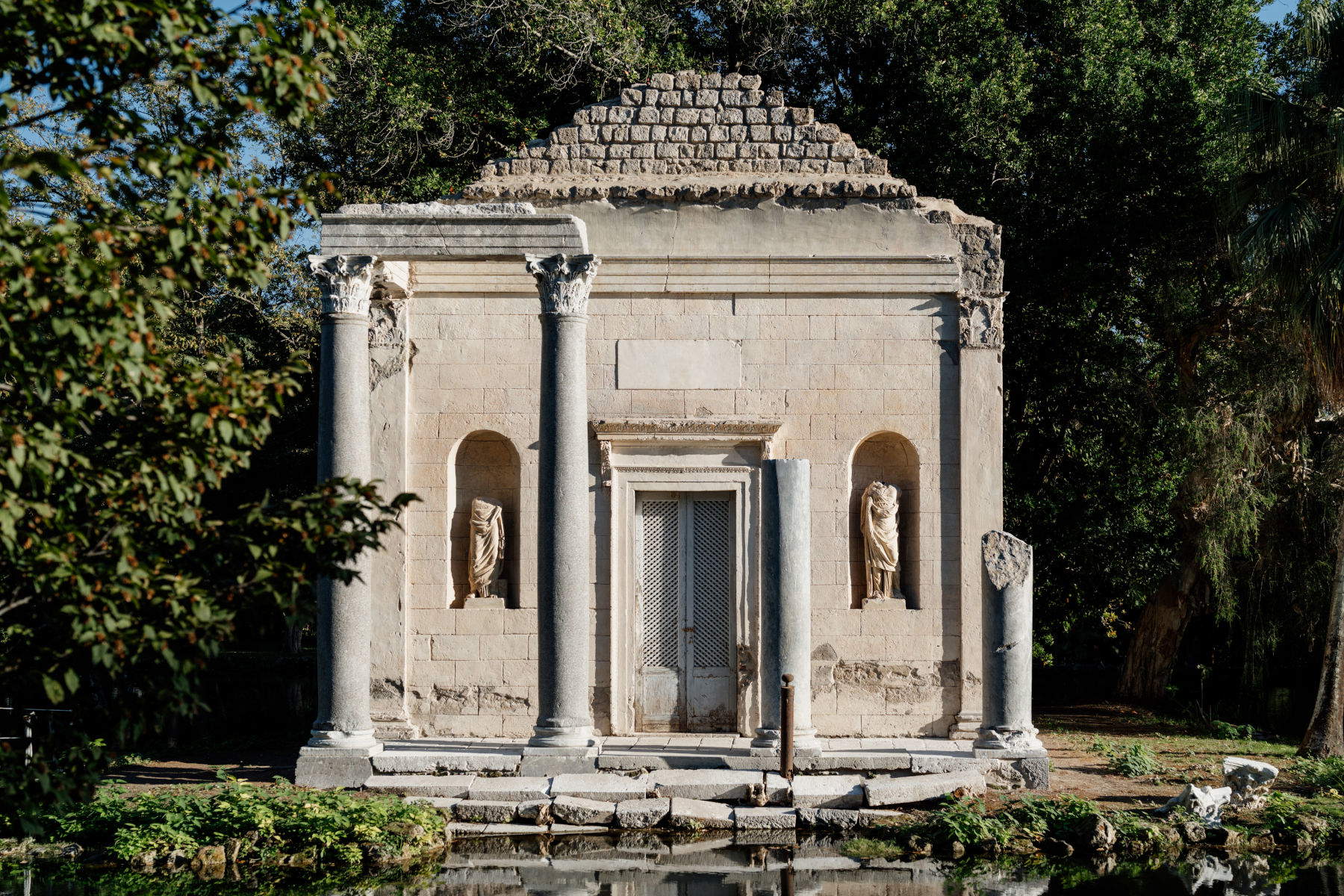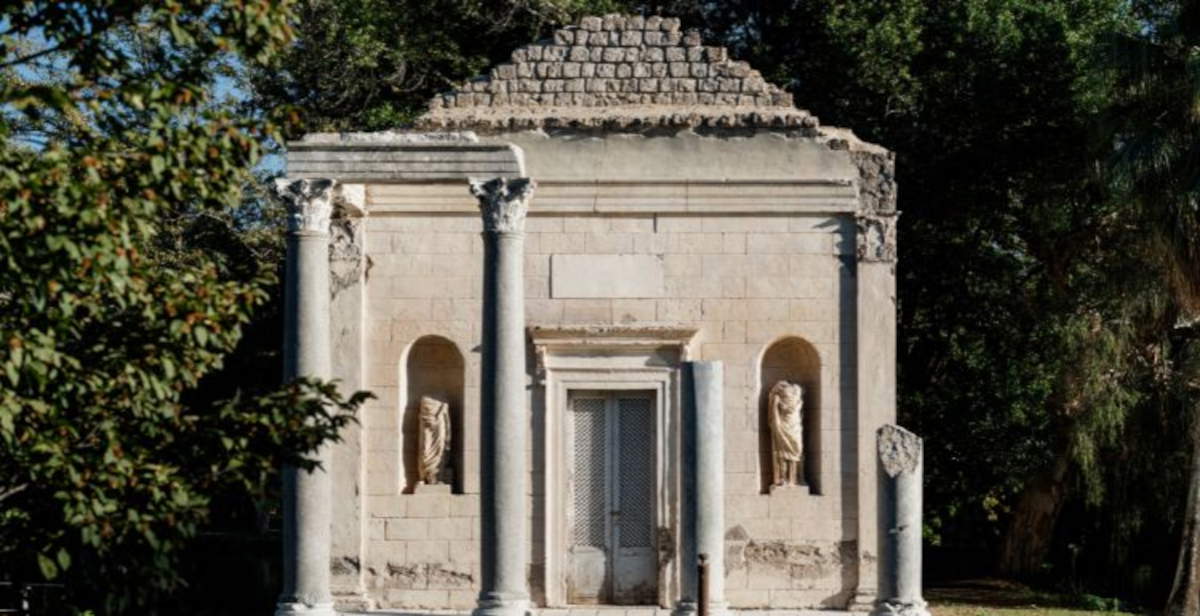The restoration of the Temple diruto and the swan shelter, two of the most recognizable elements of the English Garden of the Royal Palace of Caserta, has been completed. After about four months of work, the structures overlooking the Lake of the Water Lilies are once again showing themselves to visitors, restoring legibility to a fascinating corner of the Vanvitellian park. The intervention involved the so-called Temple diruto, a construction conceived between 1793 and 1798 with the intention of evoking the atmosphere of classical antiquity. The project, commissioned during the Bourbon era, reflects the taste for the picturesque and the ruined, typical of late 18th-century culture, which saw archaeological fiction as a tribute to the historical and artistic memory of the ancient world. The building, apparently in ruins, was conceived as a simulacrum of Roman remains, but it also incorporates authentic fragments of the classical age, inserted for decorative and symbolic purposes.
Over the course of the twentieth century, the ruined Temple had undergone numerous remodeling, reconstructions, and paint jobs that had partially altered its original appearance. The recent restoration has instead favored a strictly conservative approach, aimed at safeguarding the existing structure through targeted operations of structural consolidation and securing. The activities began with the disinfection and disinfestation of all the wall faces, followed by the cleaning and mechanical finishing of the surfaces. The plasters, which were compromised in several places, were stabilized by means of lacertines, small containment grouts that made it possible to limit the detachment of the original materials. A general consolidation was then carried out, and the roof was treated at the most precarious points with lime-based mortars and earthenware, according to techniques compatible with the building’s historical material.

Particular attention was paid to the four pillars bordering the facade. Two of them are monolithic granite columns crowned with white marble capitals from Bourbon deposits, evidence of the reuse of ancient materials within the 18th-century project. The columns underwent enzymatic cleaning to remove biological encrustations, followed by consolidation and grouting operations with lime-based mortars and marble dust. Pictorial retouching was then carried out to even out the surfaces and restore visual unity to the complex. The two sculptures located in the niches of the main facade, made of stucco in the 18th century and designed as faux antique works, also required careful intervention.
The statues were damaged and in danger of detachment; to secure them, restorers installed a system of stainless steel bars inside the structures, ensuring their stability. Where the pictorial film was abraded, touch-ups with watercolor were carried out, restoring legibility to the volumes and chromatic coherence to the whole. In parallel with the restoration of the ruined Temple, work on the swan shelter was also completed. The whole forms a striking architectural microcosm, where nature, artifice and memory come together in a balance designed to evoke the harmony of ideal eighteenth-century landscapes.
The construction site remained open to the public throughout the duration of the work, becoming an opportunity for dialogue between visitors and restorers. On the occasion of European Heritage Days, a floating platform was positioned in the pond, allowing visitors to observe the restoration operations up close. The initiative offered a novel perspective on the technical and scientific work that accompanies the conservation of monumental heritage. The work was carried out by the company Fratelli Navarra srl, which specializes in restoration of architectural heritage, using ordinary funds from the Museum of the Royal Palace of Caserta.
 |
| The Royal Palace of Caserta completes the restoration of the ruined Temple in the English Garden |
Warning: the translation into English of the original Italian article was created using automatic tools. We undertake to review all articles, but we do not guarantee the total absence of inaccuracies in the translation due to the program. You can find the original by clicking on the ITA button. If you find any mistake,please contact us.